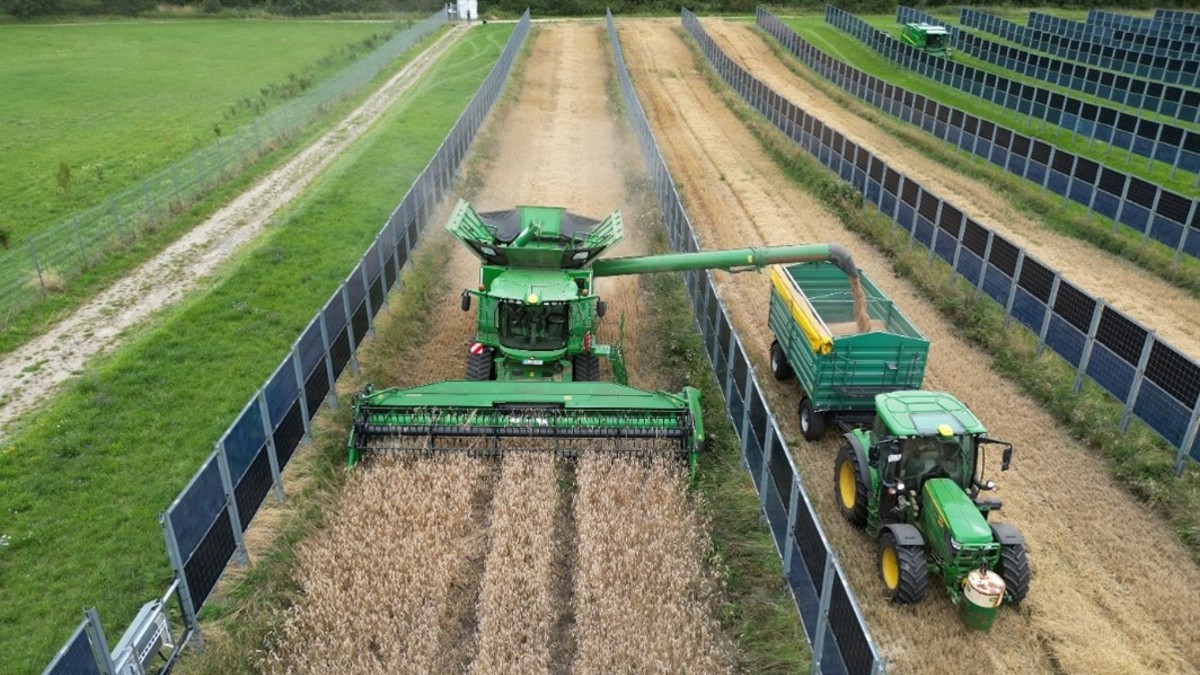
Agrivoltaics – when land is used for agriculture and solar power generation – isn’t new to the US, but vertical agrivoltaics are.
US solar developer iSun is working with German agrivoltaics company Next2Sun to install the US’s first vertical agrivoltaics system.
Next2Sun installs bifacial solar panels on its patented vertical mounting system. It says its system is ideal for agriculture-based installations because it generates power during off-peak hours and avoids overbuilding on agricultural land. The system is already being used on farms in Germany (pictured above).
Construction will begin on the US’s first vertical agrivoltaics system at the beginning of 2024, in Vermont. The system will sit on 3.7 acres and feature 69 vertical rack elements, 30 feet apart, and each will hold two bifacial solar modules. Root vegetables such as carrots and beetroot, as well as saffron, will be planted between the solar rows.
iSun CEO Jeffrey Peck said, “Thanks to the vertical mounting of the modules and the adaptability of the installation to the needs of the farmer, the valuable land is almost completely preserved for agriculture.”
The companies don’t share what power the system will generate, who will benefit from the clean electricity, nor who the client is, but it’s pretty obvious that it’s a small to medium-sized farm because it’s in Vermont.
Top comment by Noah Mayer
With how cheap solar hardware has become, it looks like that has allowed less optimal (the power generation) configurations to become profitable. This configuration looks important as it would allow solar on more farmland. Other agrivoltaics put the panels overhead on taller risers, which can increase install cost, and is beneficial to some types of crops, but very difficult to fit tractors underneath. This configuration looks easy and cheap to install (like building a fence), doesn't interfere with large farm equipment, and looks compatible with so many types of popular, short crops (lettuces, grains, potatoes, maybe even soybean).
The nice thing is that this will allow dual use of the land, and land likely close enough to a large power line for electrical distribution, and extra income to the farmers as well. I've read about communities opposed to solar bc the farmer would lease/sell the land and it would be cleared for the solar to cover the acreage. With this method, I think it would also reduce NIMBY protests.
Read more: Scientists put a semi-transparent solar roof on a greenhouse, and unexpected things happened
Photo: Knoblauch GmbH
To limit power outages and make your home more resilient, consider going solar with a battery storage system. In order to find a trusted, reliable solar installer near you that offers competitive pricing, check out EnergySage, a free service that makes it easy for you to go solar. They have hundreds of pre-vetted solar installers competing for your business, ensuring you get high quality solutions and save 20-30% compared to going it alone. Plus, it’s free to use and you won’t get sales calls until you select an installer and you share your phone number with them.
Your personalized solar quotes are easy to compare online and you’ll get access to unbiased Energy Advisers to help you every step of the way. Get started here. – ad*
FTC: We use income earning auto affiliate links. More.




Comments